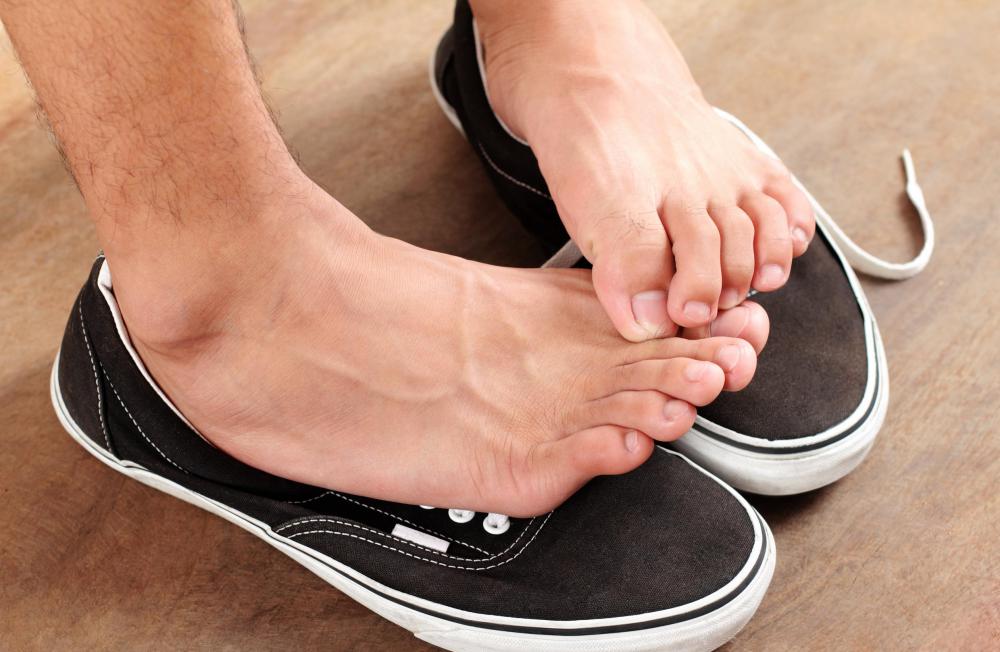At WiseGEEK, we're committed to delivering accurate, trustworthy information. Our expert-authored content is rigorously fact-checked and sourced from credible authorities. Discover how we uphold the highest standards in providing you with reliable knowledge.
What is Pompholyx Eczema?
Pompholyx eczema is an uncommon skin disorder that primarily affects the palms of the hands or the soles of the feet. A person with the condition typically notices the sudden appearance of itchy, red patches of skin that produce clusters of white blisters. Most outbreaks only last for about three weeks at a time, but since it is a chronic condition, recurring episodes are common. A person who believes he or she might have pompholyx eczema should visit a dermatologist to learn about medications that may be able to relieve symptoms.
Doctors are unsure of the exact causes of pompholyx eczema, but medical studies suggest that many factors might contribute to the development of the condition. Research shows that people with inherited tendencies for skin problems, such as atopic dermatitis, are at a higher risk of suffering from pompholyx eczema. Allergic sensitivity to airborne pathogens, dietary minerals, and certain topical lotions and creams may also contribute to the development of rashes. Doctors also believe that stress and excessive sweating can trigger outbreaks in people who are already known to have the skin disorder.

When an outbreak occurs, the hands or feet first turn red, dry, and itchy. White, fluid-filled bumps emerge from red patches over the course of about one week. The blisters themselves do not usually cause pain, but itching sensations, and the location of pompholyx eczema on the fingers or toes can be very uncomfortable. A person may not be able to wear shoes or grasp objects without irritating the blisters. Doctors strongly urge people to resist the urge to scratch itchy blisters, as doing so can cause the skin to break open and present the possibility of infections.

A dermatologist can usually diagnose pompholyx eczema simply by examining the skin. He or she may decide to perform additional tests, such as blood tests and tissue biopsies to try to identify the underlying causes of the problem. In the case of mild pompholyx eczema, the doctor usually recommends an over-the-counter anti-itch cream and an oral antihistamine to help alleviate inflammation. A more serious outbreak may require a high-strength prescription cream that contains a corticosteroid. Patients can further reduce healing time and prevent further irritation by avoiding the use of soaps and scented lotions on affected skin.

Since allergic reactions are associated with pompholyx eczema, the dermatologist may suggest that a patient be tested for specific allergies and receive regular shots to desensitize his or her immune system's response to pathogens. By keeping hands and feet well-moisturized and following a dermatologist's recommendations, a person can significantly reduce the frequency and severity of future outbreaks.
AS FEATURED ON:
AS FEATURED ON:













Discuss this Article
Post your comments